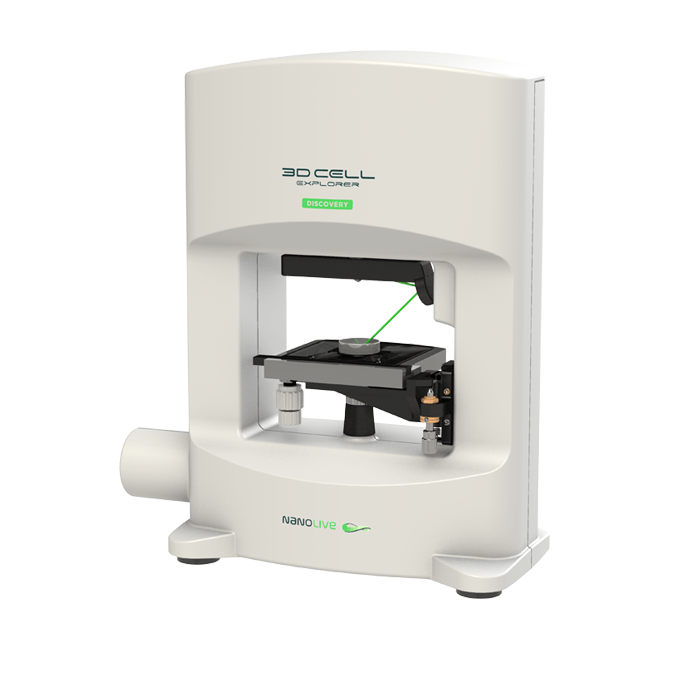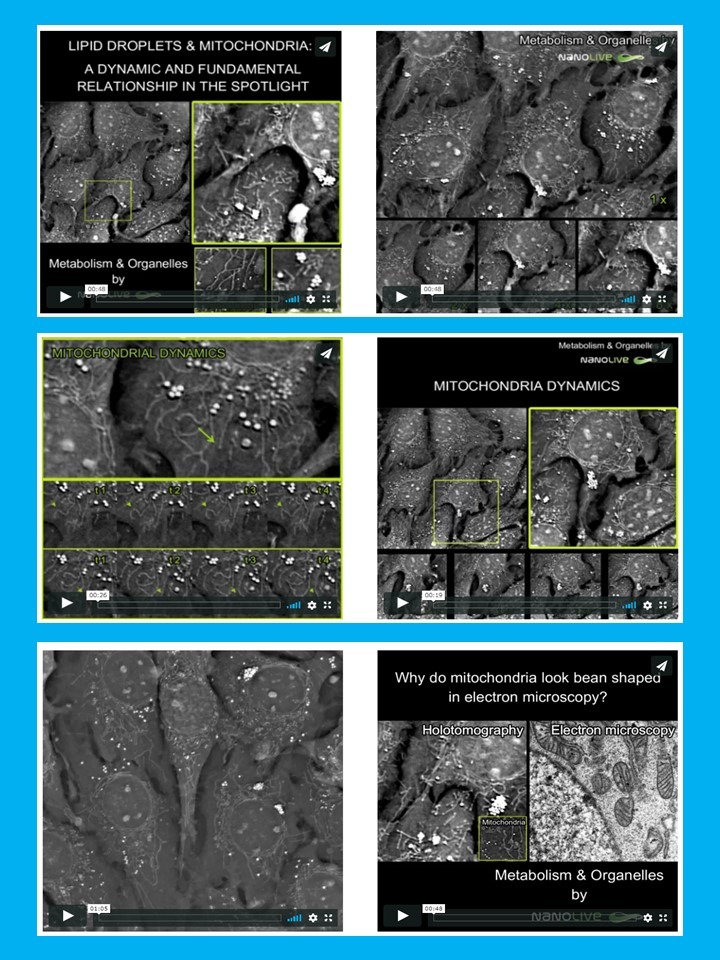
3D Cell Explorer - Live Cell Imaging Platform
Biological MicroscopyDigital MicroscopyLight MicroscopyLive Cell ImagingQuantitative Phase ImagingSuper Resolution MicroscopyTomographic Microscopy

Cellular metabolism is a complex, integrated process that is supported by key organelles, such as lipid droplets and mitochondria, which engage in numerous energetic and signalling mechanisms.
A better understanding of the dynamics and interactions of such organelles could advance research in aging, cancer, degenerative diseases or obesity.
Non-invasive live cell imaging overcomes phototoxicity problem while imaging cellular metabolism processes
A major problem with current imaging techniques is phototoxicity that leads to the observation of perturbed dynamics. Consequently, the mitigation of phototoxicity leads to poor time resolution of time lapse approaches. This is particularly true for small organelles like mitochondria or lipid droplets that are extremely sensitive to photo-induced oxidation. Last but not least, the use of chemical or genetically-encoded fluorescent markers perturbs the targeted biological processes.
However, the 3D Cell Explorer overcomes this problematic as it injects in the sample ~100 times less energy (~0.2 nW/µm2) than light sheet microscopes (~1nW/µm2) that are the reference in the matter. With a resolution below 200 nm, it enables high resolution and high-frequency imaging even with sensitive material, giving access to organelle dynamics that were previously out of reach.
Novel movies showing lipid droplets and mitochondria fine dynamics live and at high resolution
Thanks to the 3D Cell Explorer’s live imaging capabilities, highlights of lipid droplets and mitochondria fine dynamics that were previously out of reach are clearly visible now. Find further information and more examples on the following link:
On the left panel you can observe a time-lapse of pre-adipocytes imaged with the 3D Cell Explorer for 1 hour at a frequency of one image per five seconds (movie speed: 15fps). On the right panel we zoomed a portion of the field of view to better appreciate the remodeling of the mitochondrial network. On the small squares on the bottom, four time point images are displayed.
